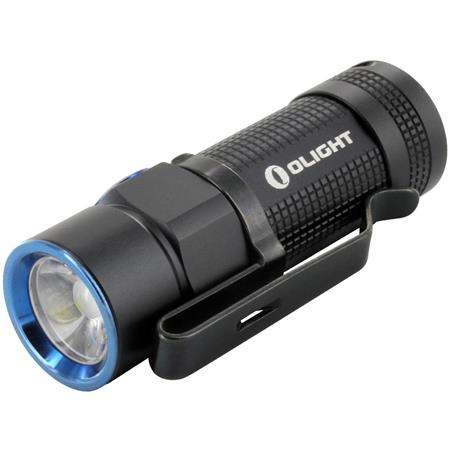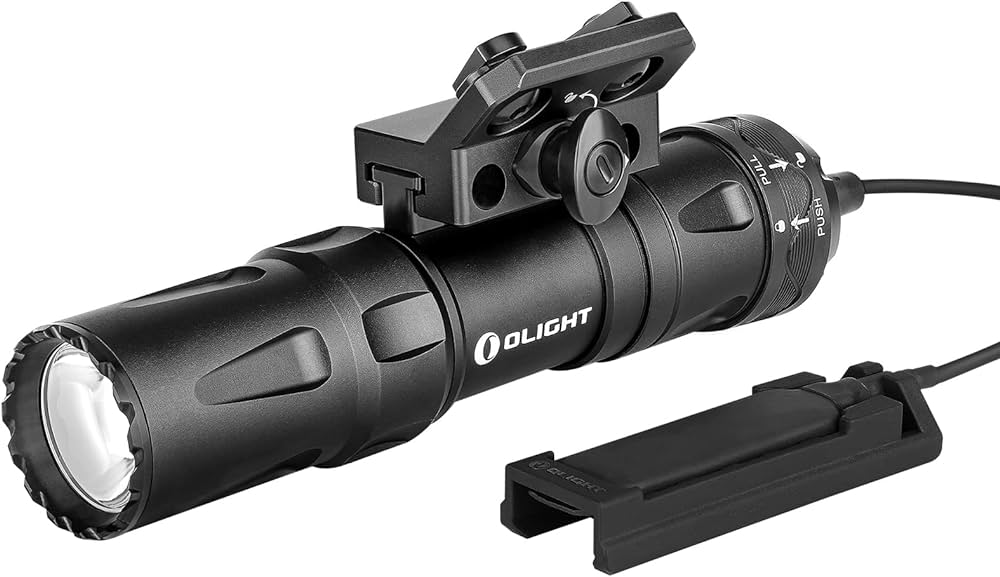In case you all haven’t figured it out, I’m not a rich person. The only reason I have nice stuff is that I’m old and have slowly accumulated this stuff/junk.
A few years ago, I purchased a replacement EDC light. Prior to this, I was using a Mini MagLite. The type that took two AA batteries. I had upgraded to the good bulbs.
The problem I had with these lights is that they were always dead when I went to use them. They would turn on in their holster or in my pocket. By the time I noticed, they were dead. While they had a spare bulb in the battery cap, I don’t like mucking around changing bulbs in the dark.
All of my MagLites were dead. The big ones, the mini’s. All of them. I had been using the cheap LED lights but decided to take a step-up. I purchased a $70 flashlight.

Given that I was used to spending $20 to $30 for a Mini MagLite, this was a big price difference.
What a difference. I use that little Olight every single day. Not an exaggeration.
First, it is tiny. Barely 3 inches long and about the size of a nickle. It comes with a reversible clip. When in the default orientation, the emitter is pointing out of your pocket when clipped to your pocket. This means that you can clip it to the bill of a cap and have an excellent light source.
It has a single control, a side push button.
So what makes this thing so damn amazing? The amount of light it throws along with its run time.
The mode I use most often is the “moon” mode. This is a 0.5 Lumen mode. This is the mode I use at night, moving around the house when the lights are out. It makes more than enough light to see 10 to 15 feet in the dark, but it doesn’t blow out your night vision.
A single click turns it off or on.
If it is on, you can press and hold, and it will cycle to the next brightness mode. 12, 60, 300 Lumens. 300 Lumens will nicely light the world. At 300 Lumens it has a 60-minute run time, at 60 Lumens it has a 4.5 hour run time. At 12 Lumens, 33 hours. If you are only using the 0.5 Lumen mode, it has a 15-day run time.
That is a heck of a long time.
In addition to the normal modes, there is a 600 Lumen mode and a 900Lumin mode. When I’m going after trash pandas, I will sometimes use the 600 Lumen mode. I had forgotten how to get into the 900 Lumen mode.
There is also a 13hz strobe mode.
One of the reasons I chose this light was that it was rechargeable. It has a magnet attach charging connector. Put the tail near the charger pad and they jump together. The charge indicator goes red. When it turns green, the battery is fully charged.
But wait! There’s more! Rechargeable is all well and fine, but what if you can’t recharge your battery? That is another outstanding feature of this particular light. It takes a regular 123 cell. This is not rechargeable, and non-olight rechargeable batteries don’t recharge in the light. This means that if you need light, you’ve got it. My package came with both the Olight rechargeable battery and a regular 123 cell as backup.
One of the side benefits of that magnetic charging system is that you can attach this light to any steel item. The other day, I was replacing the igniter in my oven. I had the light in 12 Lumen mode and just stuck to the roof of the oven. This gave me more than enough light to work with. Because it is so small, it goes into places where I could not get a big work light.
The S1R Baton is no longer made. They have follow on versions that have nearly the same features. I would not hesitate to buy any of them.

Which takes us to the Odin Mini. Because the Baton is side activated, many of the tactical light grips don’t work. It is also so small that sometimes it is hard to orient. This has become an issue when dealing with trash bandits.
I picked up the Odin Mini because it was a weapon mount light that had a quick detach. It can easily be used in your hand as well as when mounted on the provided M-Loc mount point. The package came with a charger that works with my Baton, the mounting hardware. The pressure switch for weapon mounting is also included.
It all just works.
The control is in the tail cap. There are two brightness modes, 300 and 1250. Yeah, the low power is at the “normal max” for the Baton. The 1250 Lumen mode will really light up the dark.
Again, there is only a single control. To activate the bright mode, press hard. To activate the low mode, press softer. A quick click and stays on. Click and hold to have the light go off when you release pressure.
The pressure switch uses the same quick or long, but only activates high mode.
As an off weapon light, it works well. On the weapon it works well.
For me, the big thing was learning that there is a huge difference between what I need for a weapons light and what I need for every day. This thing is too bright for most everyday uses. As a weapons light, in my environment, it is damn near perfect. The only thing that would improve it is if I could select the low mode from the pressure switch.
If you want more, they have a version with a built-in green light laser. You can mount the light and then zero the laser to the point of impact. The GL is visible in both low light situations and most bright situations. The laser can be run with the white light, by itself, or just the white light.
There is a big brother version, the Odin (vs. Odin Mini). I considered it, but I didn’t need the extra Lumens, nor did I need the laser option.
I’m currently looking at their Warrior series as a second, slightly larger, EDC light. One of the requirements is that the light must have a tail switch.




